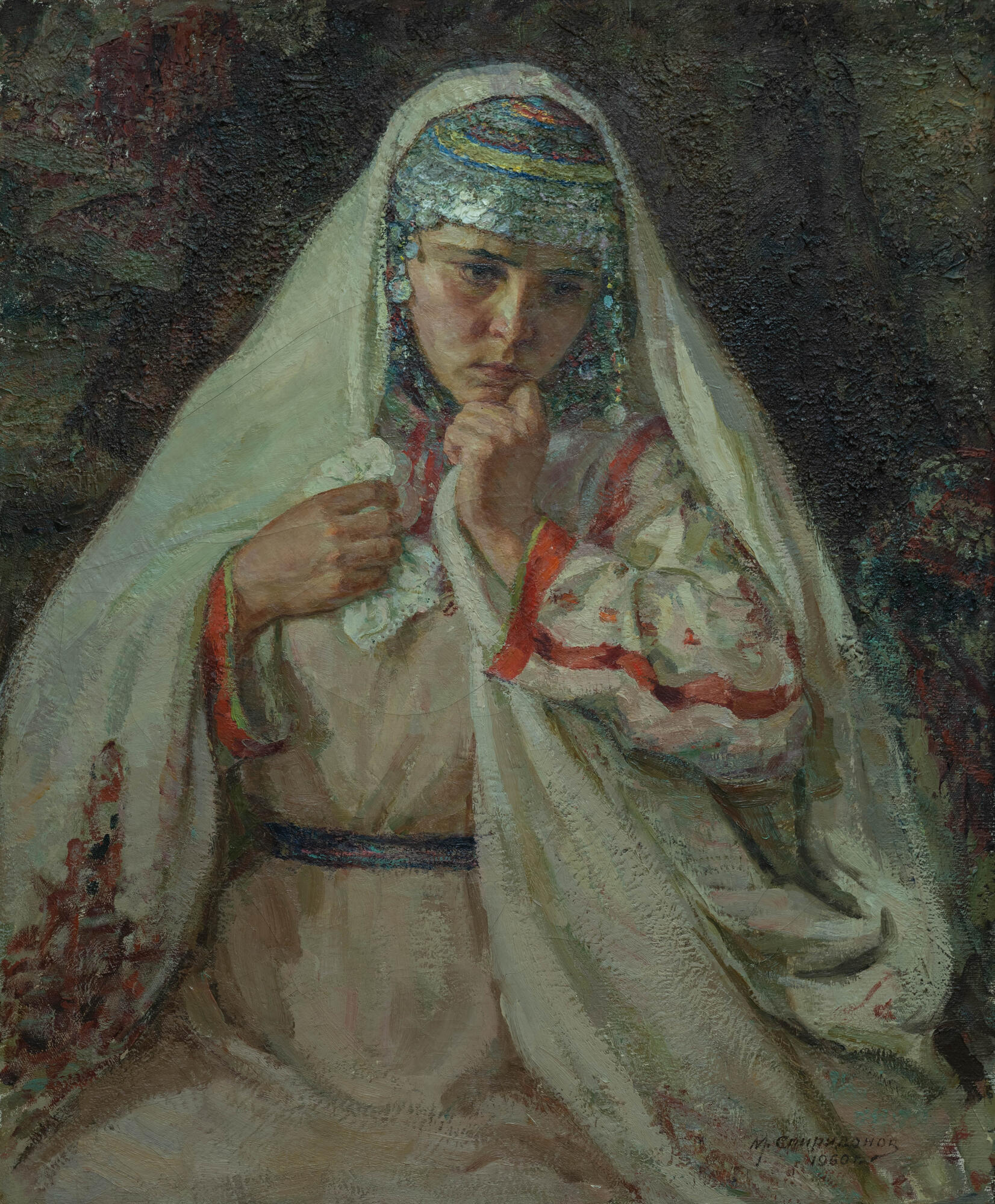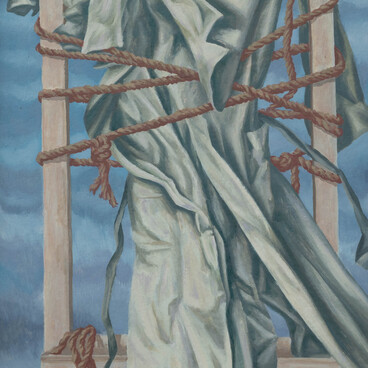Moisey Spiridonovich Spiridonov is one of the founders of professional painting in Chuvashia. He was born in 1890 in the village of Yanshikhovo-Norvashi, Kazan Governorate, into a peasant family. He graduated from the Kazan Art School and in 1912 entered the Higher Art School of the Academy of Arts in St. Petersburg to train in the workshop of Nikolay Semyonovich Samokish.
In terms of his works, Moisey Spiridonov is quite versatile. He worked on portraits, landscapes, and genre paintings.
The painting called “Bride” holds a special place in the artist’s oeuvre. The painter created several versions of this picture. Two of them are housed in the Chuvash State Art Museum, and the other two — in the Moisey Spiridonov Memorial Museum-Apartment. The presented version is one of the latest, painted in 1960.
For many years, Spiridonov was devising the image of a Chuvash bride, looking for the best way to express her psychological state. At first, the composition was complex and included the interior of an old barn, lined with dowry items, and the bride was much older than in the painting on display. However, the image of a decisive girl that seemed eager to start a married life, that the artist depicted, did not correspond to how it was in real life. Centuries-old traditions cemented the parents’ right to seal the fate of their daughters, and, while shedding bitter tears, Chuvash women still could not refuse the upcoming marriage. This version of the painting shows a close-up image of a young bride wearing a silver dress and a veil. According to tradition, she waits in a closed barn until the groom comes to her. She seems saddened by her thoughts: could it be that the husband, whom her parents chose for their own financial gain, would turn out to be old and hateful, and she would have to say goodbye to all hopes of happiness, say goodbye to love? The thought-provoking image magnetizes with its original plot, and its deep emotionality is what makes the painting “Bride” so unique and exciting.
Moisey Spiridonov offered Nina Marchenkova, who worked in the House of Artists, to pose for this painting. Here is what Nina Marchenkova shared about the experience, “He dressed me in the traditional bride’s clothes — a white dress and a tukhya — and asked me to sit on a large Chuvash chest. I had a handkerchief in my hands, also an old one, decorated with lace along the perimeter. And so I started posing. He showed me how to sit and what facial expression to have. I went there for one hour five times a day every day.” Experts believe that this last version of the painting is the strongest one in terms of psychological depth.
In terms of his works, Moisey Spiridonov is quite versatile. He worked on portraits, landscapes, and genre paintings.
The painting called “Bride” holds a special place in the artist’s oeuvre. The painter created several versions of this picture. Two of them are housed in the Chuvash State Art Museum, and the other two — in the Moisey Spiridonov Memorial Museum-Apartment. The presented version is one of the latest, painted in 1960.
For many years, Spiridonov was devising the image of a Chuvash bride, looking for the best way to express her psychological state. At first, the composition was complex and included the interior of an old barn, lined with dowry items, and the bride was much older than in the painting on display. However, the image of a decisive girl that seemed eager to start a married life, that the artist depicted, did not correspond to how it was in real life. Centuries-old traditions cemented the parents’ right to seal the fate of their daughters, and, while shedding bitter tears, Chuvash women still could not refuse the upcoming marriage. This version of the painting shows a close-up image of a young bride wearing a silver dress and a veil. According to tradition, she waits in a closed barn until the groom comes to her. She seems saddened by her thoughts: could it be that the husband, whom her parents chose for their own financial gain, would turn out to be old and hateful, and she would have to say goodbye to all hopes of happiness, say goodbye to love? The thought-provoking image magnetizes with its original plot, and its deep emotionality is what makes the painting “Bride” so unique and exciting.
Moisey Spiridonov offered Nina Marchenkova, who worked in the House of Artists, to pose for this painting. Here is what Nina Marchenkova shared about the experience, “He dressed me in the traditional bride’s clothes — a white dress and a tukhya — and asked me to sit on a large Chuvash chest. I had a handkerchief in my hands, also an old one, decorated with lace along the perimeter. And so I started posing. He showed me how to sit and what facial expression to have. I went there for one hour five times a day every day.” Experts believe that this last version of the painting is the strongest one in terms of psychological depth.



